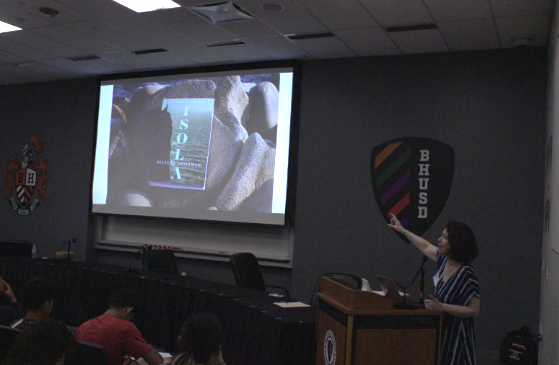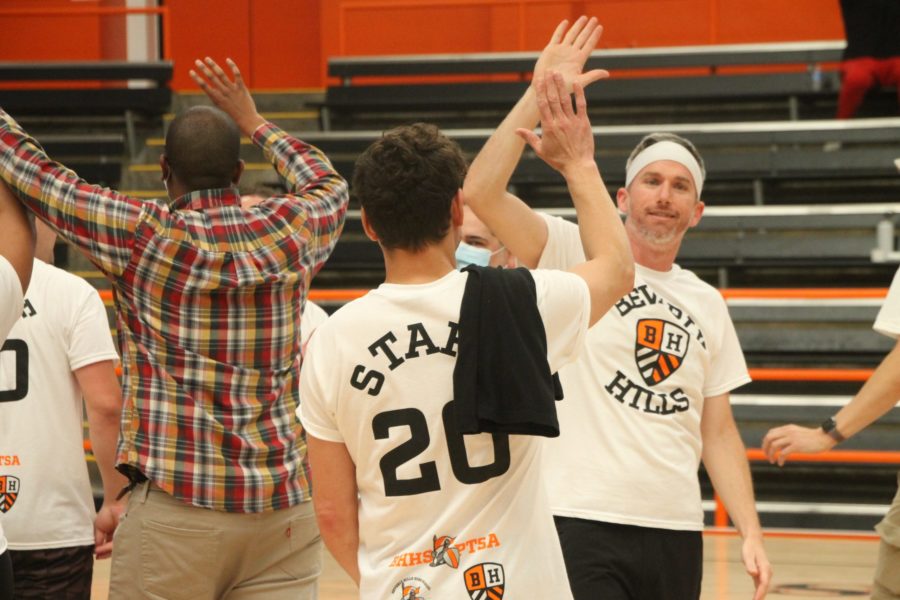Alya Mehrtash managing editor
The novel coronavirus (COVID-19) pandemic has taken the world by storm. There have been 1,591,523 international coronavirus cases reported as of April 9, yet many still fail to take protective measures, such as social distancing, seriously and that is absurd.
In the United States, the Centers for Disease Control and Prevention (CDC) has reported over 14,000 deaths due to the coronavirus as local, state and federal government officials continue to warn their constituents about the danger of the illness. In Beverly Hills alone, there have been 71 reported cases of COVID-19 and a rate of infection of about 205.7, according to the LA County Department of Public Health. So why do Americans across the country continue to go out and ignore such serious warnings? There is simply no logic behind it.
The virus has two distinctive characteristics that make it even more dangerous than other viral infections, such as Influenza. Firstly, it is incredibly contagious. According to the CDC, the virus can be spread through close human contact, respiratory droplets from infected carriers, or even contact with contaminated surfaces or objects, where the virus can remain for a few hours or up to several days, according to the World Health Organization. Additionally, most carriers of the virus are asymptomatic for approximately 14 days before they begin to show signs of illness. During this asymptomatic period, however, the virus is still contagious and can be spread without knowledge of contracting it to begin with. Some of the symptoms of COVID-19, such as shortness of breath, consistent pain or pressure to the chest and “new confusion and inability to arouse,” are also much more intense than that of Influenza, for example.
One could believe that they’re not sick, for example, and choose to go to see family when really, they are infected. When they visit said family, they are likely to spread the virus to at least 2-3 people, according to a study conducted by the Journal of the American Medical Association. This is exactly why social distancing is so vital–it prevents further transmission of the sometimes fatal virus.
So far in the United States, there have been 374,329 reported cases of COVID-19, and many infected patients have been hospitalized. According to a 2015 CDC report, there were a total of 897,961 hospital beds across the nation, including those meant to serve cardiac intensive care, neonatal intensive care, pediatric intensive care, etc. In other words, if all American COVID-19 patients required hospitalization, they would take up over 40% of all American hospital beds. It is important to note that those impacted by the virus are not the only ones needing immediate medical attention; hospitals must serve other patients as well. In 2015, American hospitals averaged a total of 65.5% occupancy rates, but with the increase in hospitalized patients due to the recent outbreak, these hospitals are very likely to deal with higher occupancy rates than they are normally used to. If Americans continue to diligently practice social distancing, the number of COVID-19 patients requiring hospitalization could slowly become more controlled, and medical workers will be able to treat more patients more thoroughly. But until we start doing so, the number of hospitalizations will continue to increase, and hospitals will have to deal with the dilemma of having to choose between which patients to prioritize, as has already been reported in other affected countries like Italy.
Hospitals are overflowing with patients, supply companies are failing to produce enough product to meet current demands, businesses are struggling to stay afloat as more and more are shut down temporarily, and yet many of the same people who complain about having to be in quarantine are the ones who continue to go outside and prolong this period of isolation while also putting their own health and the health of others at risk.
Many young people also have a false sense of their immunity to the virus. In the early stages of the outbreak, many believed that people younger than their 50s were significantly less prone to the virus, but soon that was proven to be false as more and more young people began testing positive for COVID-19, some of whom were ignorant college students who had made a conscious decision to ignore warnings and still go on their spring break trips to Mexico, Florida and other places.
Los Angeles Mayor Eric Garcetti issued the “Safer at Home” emergency order on March 19, which called for Angelinos to stay home with the exception of essential activities. Many, however, ignored the order, forcing Garcetti to ultimately close “sports and recreation at @LACityParks and closing parking at city beaches,” he tweeted. It’s absolutely mind boggling that even after an emergency order is issued, people continue to ignore their government officials simply to partake in recreational activities while selfishly putting others’ health, as well as their own, at risk.
This weekend we saw too many people packing beaches, trails and parks. So we are closing sports and recreation at @LACityParks and closing parking at city beaches. That doesn’t mean gather elsewhere. This is serious. Stay home and save lives.
— MayorOfLA (@MayorOfLA) March 23, 2020
https://platform.twitter.com/widgets.js
To a certain extent, it’s true that younger people are not as greatly affected by the virus as others, but they are still affected nevertheless. We’re not invincible simply because we are teenagers. We’re still at risk of getting sick. Not only that, but we are also able to get others around us who are at a higher risk, including our parents and grandparents, sick. Using the argument that “I’m young, I won’t get sick,” is not only wrong, but so disgustingly selfish. Thousands of people are dying. This virus is no joke, yet so many are treating it like one.
It is absolutely crucial that all Americans, for themselves and for the greater good, not only educate themselves about COVID-19, but also listen to the recommendations of medical professionals, and their recommendation is simple. Stop going on picnics in parks, stop going over to your friends’ houses, stop going to the beach. Stay at home.


































